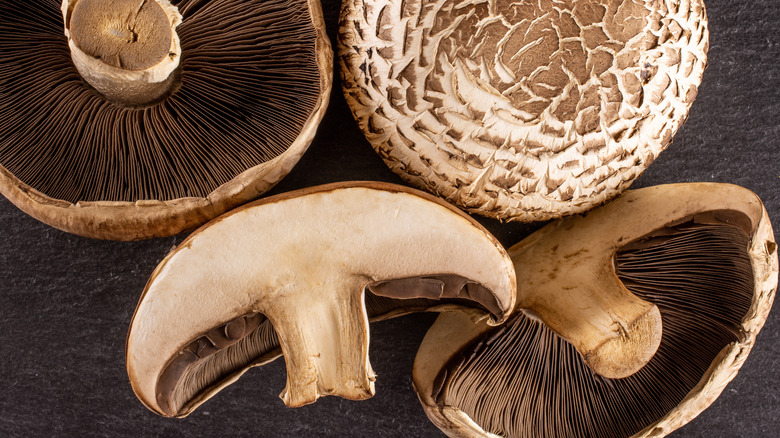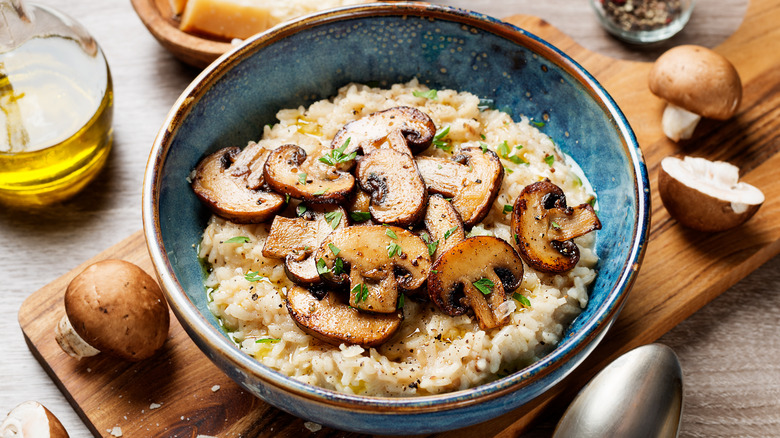Portobello Mushrooms Vs. Cremini: What's The Difference?
Mushrooms are the meaty fungi that unite us all (since fungi are not, in fact, plants via Fruits and Veggies). From delicious portobello burger patties and vegan carne-asada tacos to the toppings on cheesy pizzas and in casseroles — mushrooms can do it all. But with more than two thousand species of edible mushrooms, per the 2021 study published in the journal, Comprehensive Reviews in Food Science and Food Safety, the different types of shrooms and their uses can be hard to distinguish.
So, to simplify, why not start by comparing what Country Living identifies as two of the most common species of edible mushrooms: Portobello and cremini? While they couldn't look more different, though both are forms of the same fungus, Agaricus bisporus, portobello and cremini mushrooms have more in common than meets the eye. But when it comes to their uses in the kitchen, both types of mushrooms have some distinct differences that could determine how you prepare your next mushroom-infused dish.
Similarities and differences
To begin, portobello and cremini mushrooms have a lot in common. Since they are the same fungus, Agaricus bisporus, both mushroom varieties have smooth caps and warm brown colors. When eaten, each delivers the signature savory mushroom flavor and meaty texture that makes them useful in a range of meals — either as a meat replacement like in a mushroom meatloaf or in addition to veggies. It may come as a surprise to learn that, besides their size, the one thing that separates creminis from portobellos is their age (via My Recipes).
Portobellos are really just the grown-up creminis — which makes sense, considering creminis are also sometimes referred to as "baby bellas." So, because they're given the time to fully mature, portobellos are much larger than creminis. However, in time, The Kitchn states that they also lose moisture and produce a more distinct mushroom flavor. In comparison, cremini mushrooms are smaller in size with a more watery texture. Additionally, because they're younger, cremini mushrooms don't get the time to develop the dark gill-looking lines found underneath the portobellos' caps.
Best uses
When it comes to determining which of these mushrooms best suits your recipe, The Kitchn states that it really comes down to size and texture. For example, portobellos would be your best bet when creating a burger patty because their firm textures are better at holding shape. Other dishes, such as stuffed mushrooms or mushroom steaks, are better suited to portobellos thanks to their large size and meaty flavor.
On the other hand, creminis would be your go-to option for times when you want to add or infuse the flavor of mushrooms into a dish but don't necessarily need to do so with large cuts or pieces. Because of their small, bite-size shapes, cremini mushrooms are perfect when sautéed and used as a topping or added to your omelets, burgers, pasta, vegan stroganoff or mushroom risotto. Country Living also says that they work great in mushroom soup and stews.


